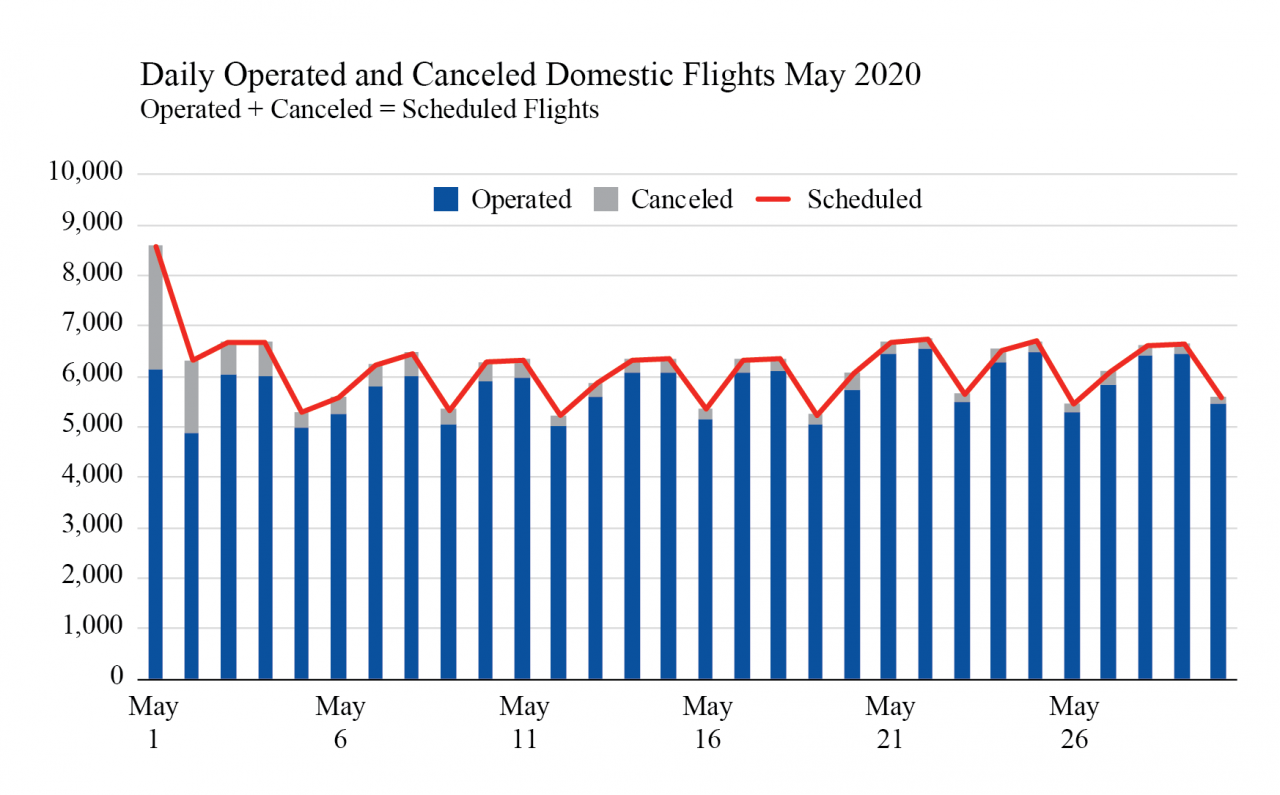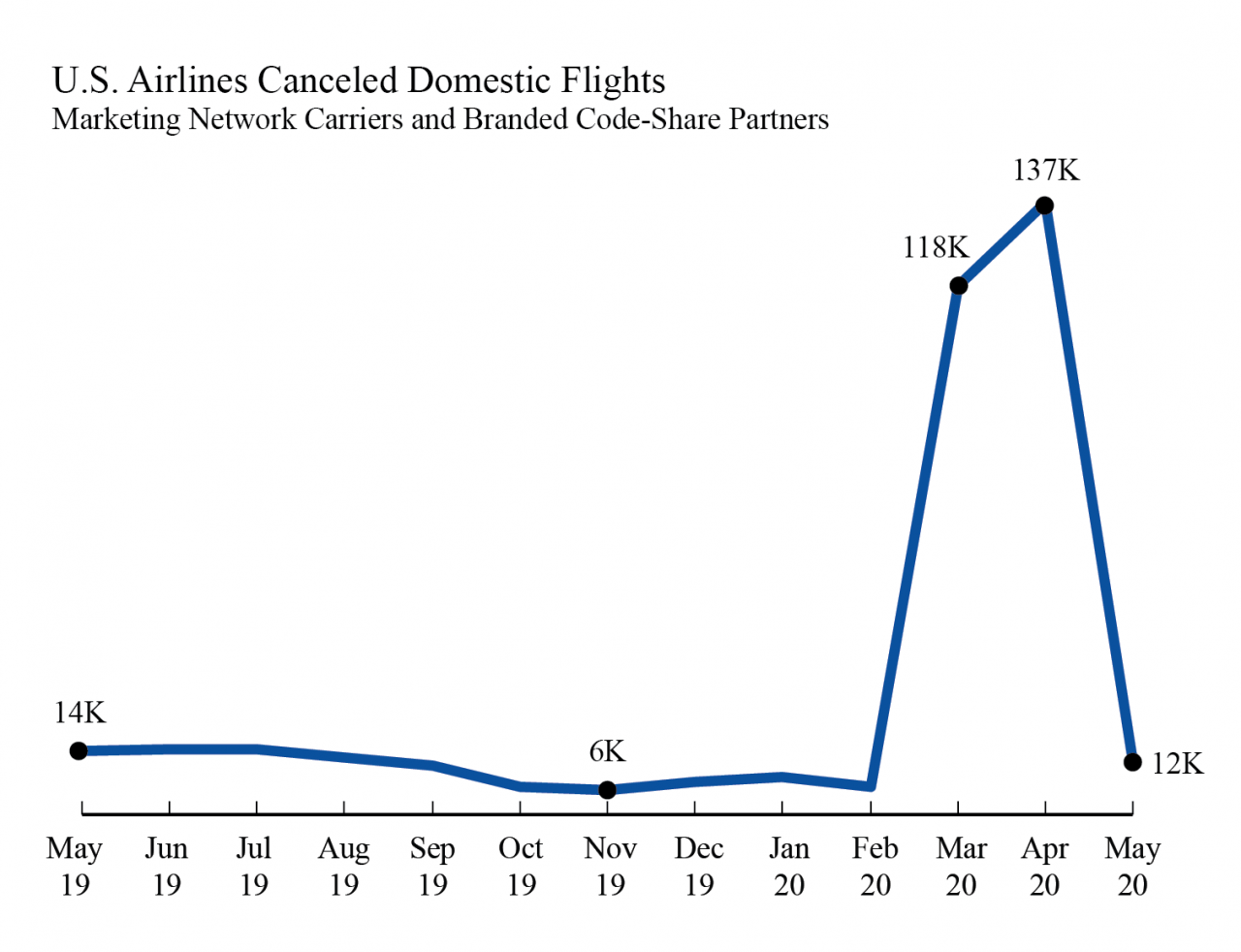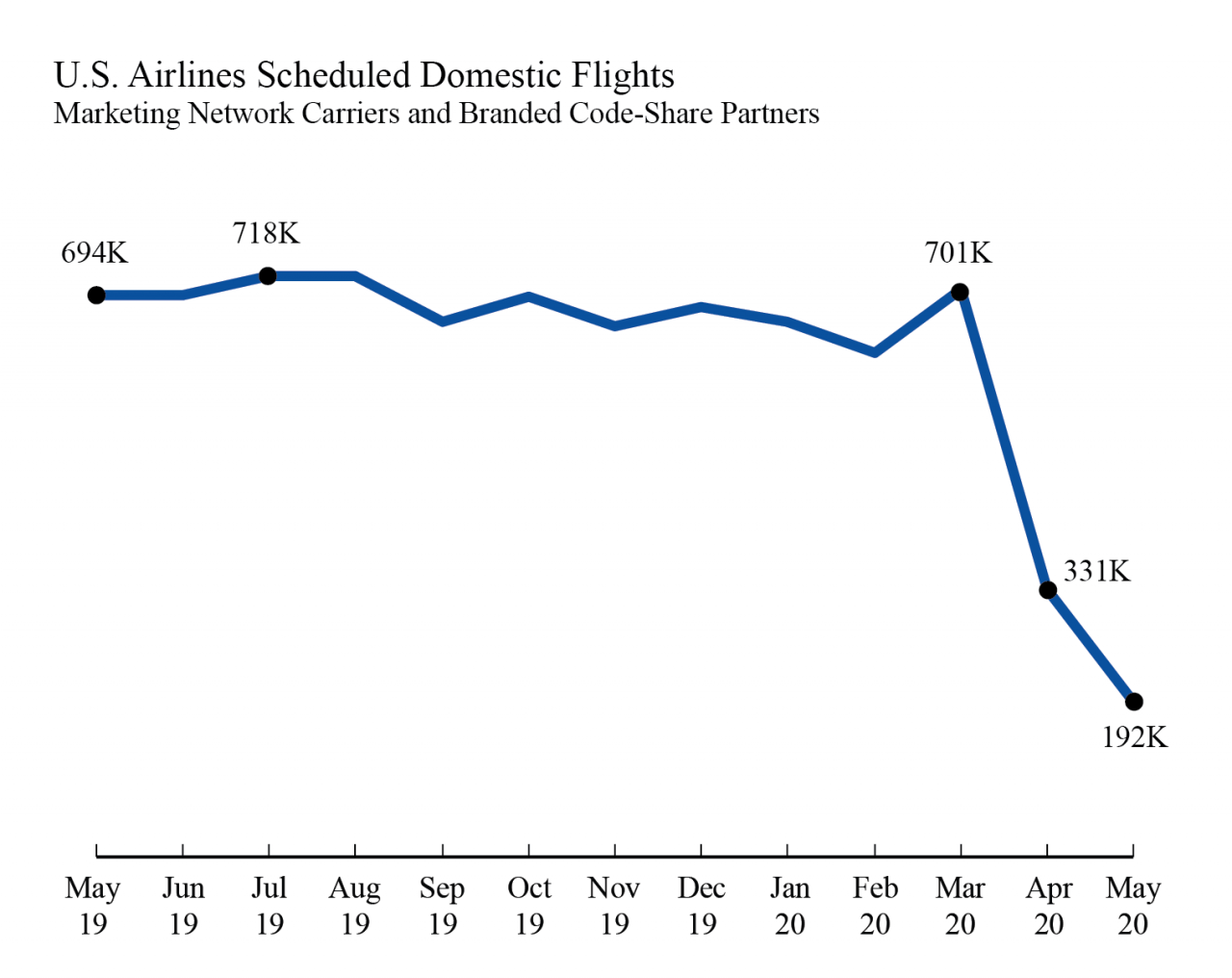Flight Cancellations Stabilize in May, but Total Flights Hit Another Record Low
Data spotlights represent data and statistics from a specific period of time, and do not reflect ongoing data collection. As individual spotlights are static stories, they are not subject to the Bureau of Transportation Statistics (BTS) web standards and may not be updated after their publication date. Please contact BTS to request updated information.
In May, U.S. passenger airline flight schedules caught up with the diminished demand inflicted by the COVID-19 pandemic. That ended a 2-month scramble to adjust schedules in the face of the virus. The 192,412 flights scheduled marked a record low; that number was also 42% lower than the number of flights scheduled in April. Although the reduction in scheduled flights enabled airlines to avoid many of the cancellations that disrupted travel in March and April, it also resulted in a record low number of flights operated.
As the chart above shows, airlines were still tinkering on the first day of the month, but quickly found an equilibrium resulting in fewer than 7% of scheduled flights canceled.
Operated flights mark a new low (again)
The effects of the virus on demand for air travel still led to a record low number of 180,151 flights operated, a 7% drop from the previous month and a nearly 74% drop from May 2019. That’s the second consecutive monthly low.
Cancellation rate reduced as airlines cut schedules in advance
For passengers who did book tickets on scheduled flights, May was smoother than April in terms of flights being canceled. Airlines removed thousands of flights from the schedule as they did in April, but the removals took place in advance (reducing the number of scheduled flights) instead of within a few days of flight time (canceled flights). (Technically, a flight removed from the schedule at least 7 days in advance is not a cancellation.) By cutting the schedule in advance, airlines ended two months of unusually high cancellation activity, taming the cancellation rate from almost 17% in March and 41% in April to less than 7% in May.
Schedule contraction continues into May
One reason airlines were able to operate a relatively normal percentage of their scheduled flights in May is the record low number of flights they scheduled for the month. In addition to the 42% drop from the number of flights scheduled in April —a schedule itself reduced by the virus— May's 192,412 scheduled flights represent a 73% year-over-year contraction from May 2019.
Explore the data
Below, BTS presents the Excel table of flights operated, flights scheduled, flights canceled, and the cancellation rate for "All Carriers" and for individual carriers.




